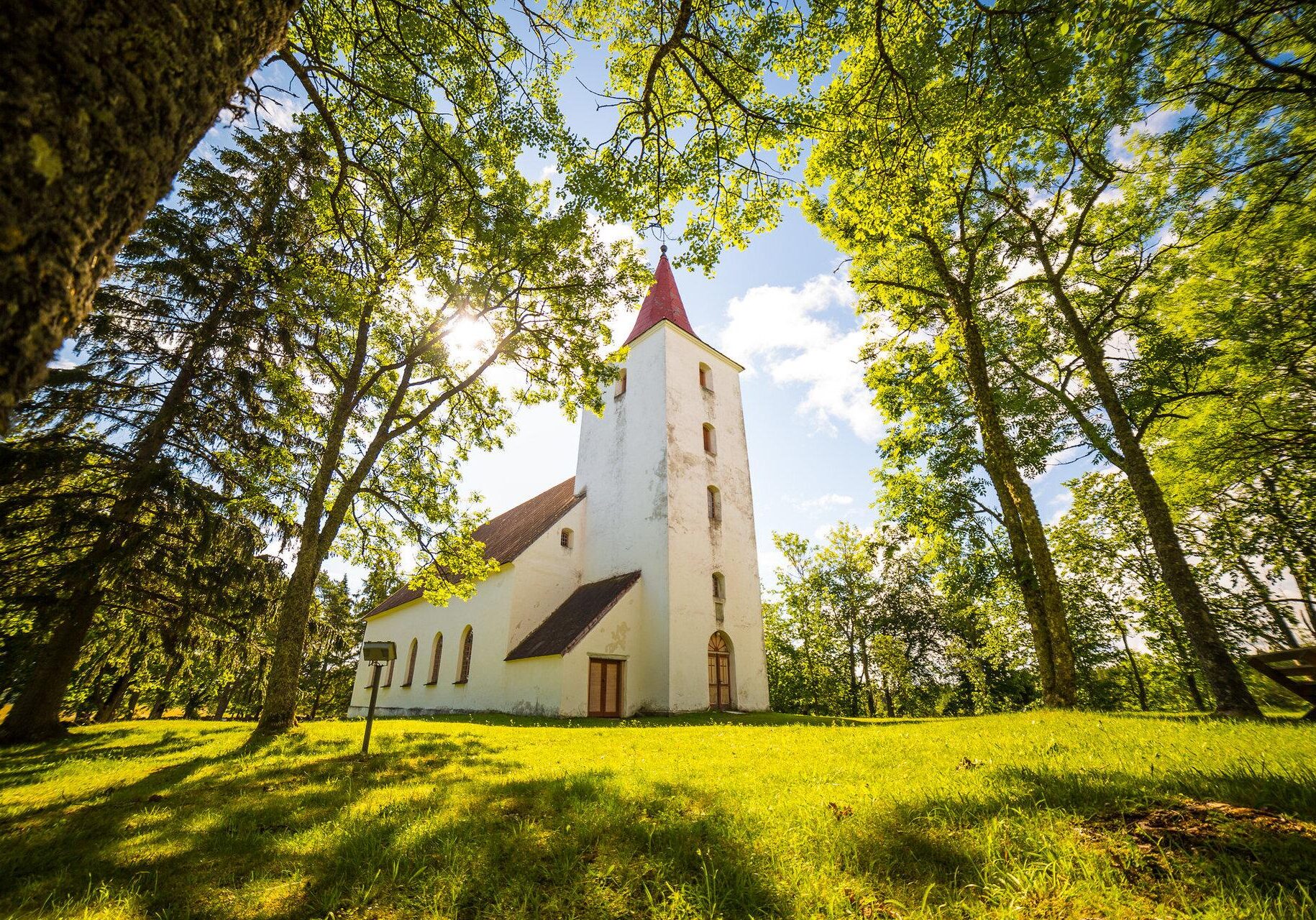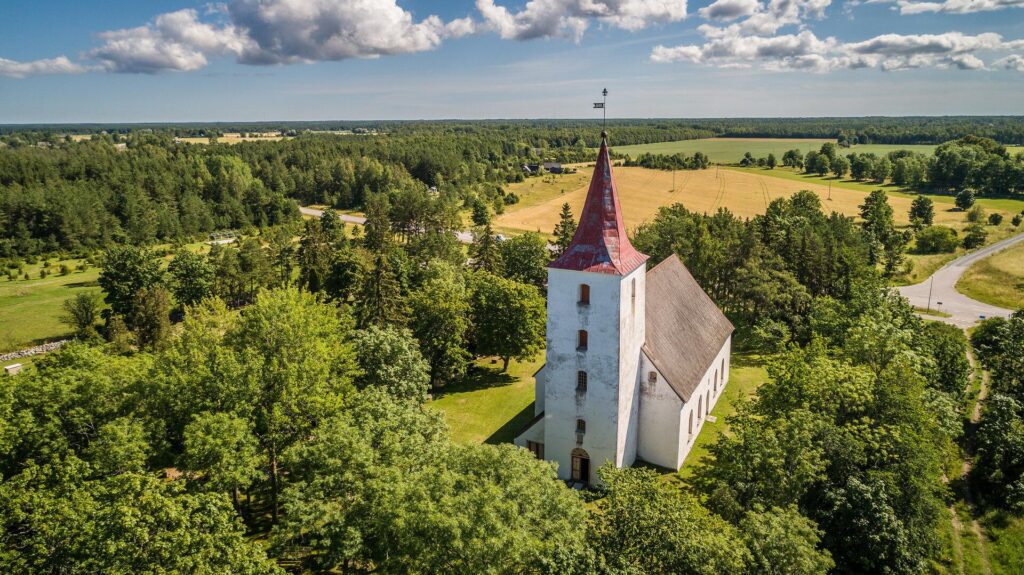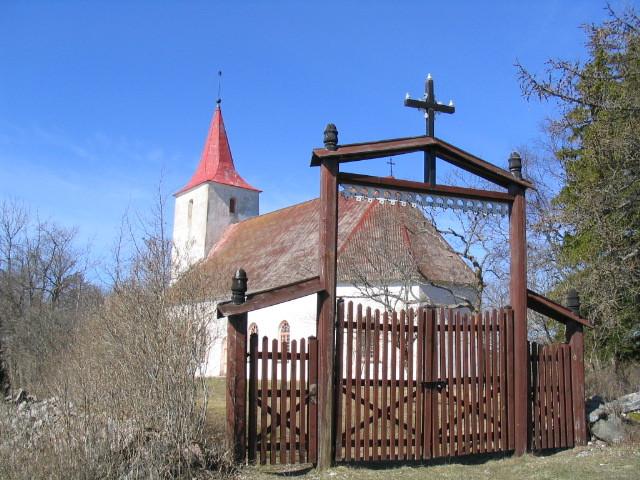
Reigi did not become an independent parish until 1627. . The greatest treasure of Reigi church is its art collection.
Did you know…?
The name ‘Reigi’ comes from Swedish and means ‘smoke’ or ‘signal fire’Pihla Tavern, known from Gustav Ernesaks’s opera ‘Stormy Beach’, was located across the street from the churchInspired by the words of Runeberg, Pastor G. F. Rinne wrote a song of praise to Hiiumaa to a tune by Pacius
The name Reigi originates from the local Swedes and it means both smoke and beacon fire. Reigi was the biggest Swedish village in northern Hiiumaa.
After the Swedes were deported in 1781, local Estonians started to form their own community in Reigi. Swedish families that lived beside the church were not deported and at first people called the community Rootsi küla (Swedish village); later it became the official name. Even before the World War II some older people in the village talked to each other in the old Swedish language. O. R. L. von Ungern-Sternberg established a small dairy farm attached to a manor in Reigi village proper. Bricks were also produced near Reigi. In the 20th century a dairy operated in Reigi. The manor served as a schoolhouse. Reigi became an independent parish in 1627, when the congregation separated from Käina. The writer Aino Kallas has described those times colourfully in her book The Reigi Pastor. The characters of the book did not go to the church we see nowadays, but an old wooden church that was situated in Reigi village. A wooden church with an architecturally interesting central tower was subsequently built in the 1690s on the high Pihla hill. The church was dedicated to John the Baptist. Swedes formed the better part of the congregation, so the clergymen had to speak Swedish too.
The stone church, still used for services but reconsecrated to Christ, was built by Baron Otto Reinhold Ludwig von Ungern-Sternberg (1744-1811) in memory of his son Otto Dietrich Gustav, who killed himself. The church was inaugurated on August 24, 1802.
The heraldry above the main entrance also refers to the Ungern-Sternbergs. The family burial place is situated nearby. Although the coat-of-arms remind us of the higher dignitaries, ordinary workers and builders are also remembered in the church. Their names can be seen on the black boards at the side of the altarpiece, next to the names of the patron and landlords.
In accordance with modern traditions, the Reigi church is built to be roomy and light. If you think about it, being inside the church is very much like standing under a huge boat turned upside down. All of the architecture resounds with themes of belonging together. The biggest asset of the Reigi church is its art collection. Almost all the works tell a story that is older than the church and they lead us to the European art traditions through Biblical themes. It is not known exactly how all these works reached the far-away Reigi church, but some of them might have come from castaways and shipwrecks, and others must represent the taste or means of the former landowners. The year on the wall, 1899, is the year of the last major reconstruction work, when the church’s colour scheme changed and the current altarpiece was installed.
The church may also justifiably be proud of its organ, presumed to be of Hiiumaa origin. Folk tales connect the organ with the parish pastors, the Sakkeuses from Käina, although there is no written evidence.
The story of Reigi church could include a separate chapter about local pastors, because some of them were quite important in the history of culture. Some of them are more famous for their bad reputation than honest service in the congregation, for example the first pastor, P. A. Lempelius, who sentenced his unfaithful wife to death by beheading.
C. Forsmann was a pastor at the time, when the Swedes were deported from the island and also during the inauguration of the stone church. He hired an itinerant clergyman and launched a hat factory. pictures or something else. The farmer could not answer these questions and at last he said, that there was just a bunch of straw with little creatures crawling on them – sheet music!
Pastor G. F. Rinne could speak the local language very well, and composed an ode to Hiiumaa inspired by the words of Runeberg to a tune by Pacius he had heard in Finland. It is presumed that even J. V. Jannsen (1819-1890), an Estonian writer and person of culture during the awakening period, who couldn’t understand Finnish or Swedish, used the words of Rinne’s Hiiumaa song while composing Estonia’s national anthem.
Across the road from the church was once situated the parsonage and the famous Pihla tavern that is even mentioned in Gustav Ernesaks’s opera Stormy Shore. The parsonage is still unoccupied, but full of dignity. Nothing is left of the Pihla tavern, and even the hill on which it was situated has been bulldozed.
Legends and stories
The church was also a place where people could get additional education, especially in reading and singing. But once it happened that a farmer found a book that he couldn’t understand. He offered it to the landlord and other people. Everybody asked: what does the book look like? Does it contain stories or is it empty, are there.
Gallery
It is a waypoint on the journey
You might also be interested in:





